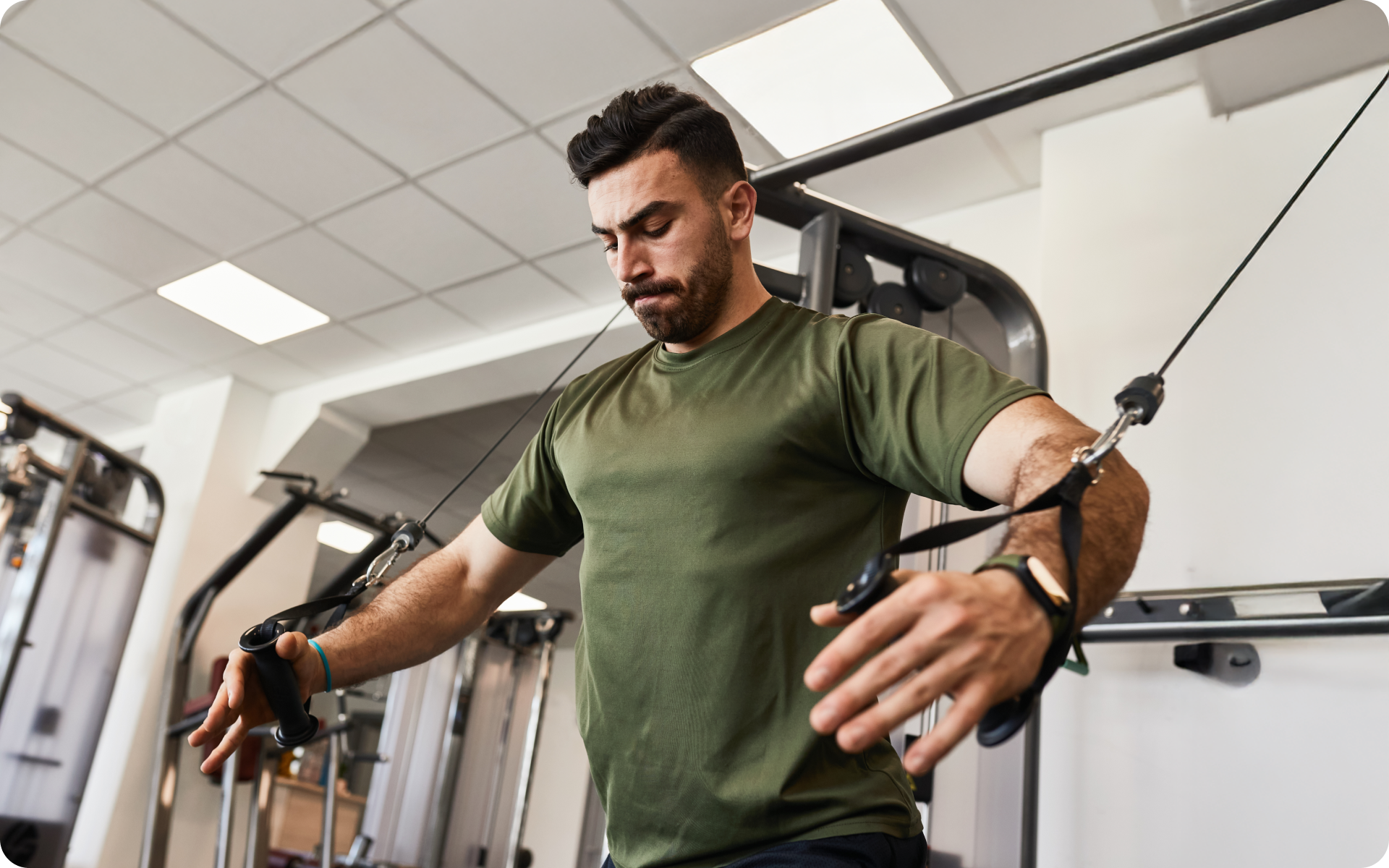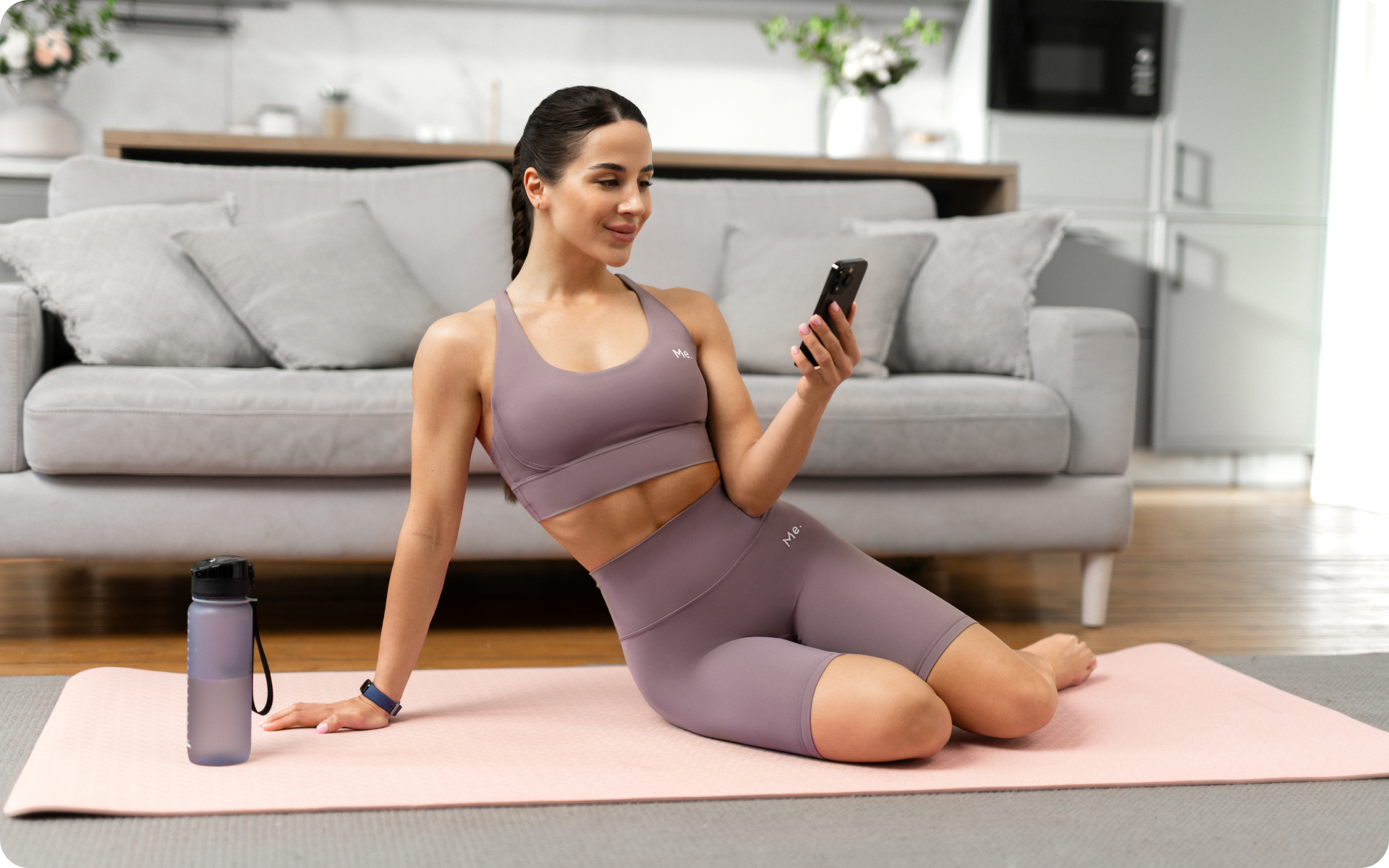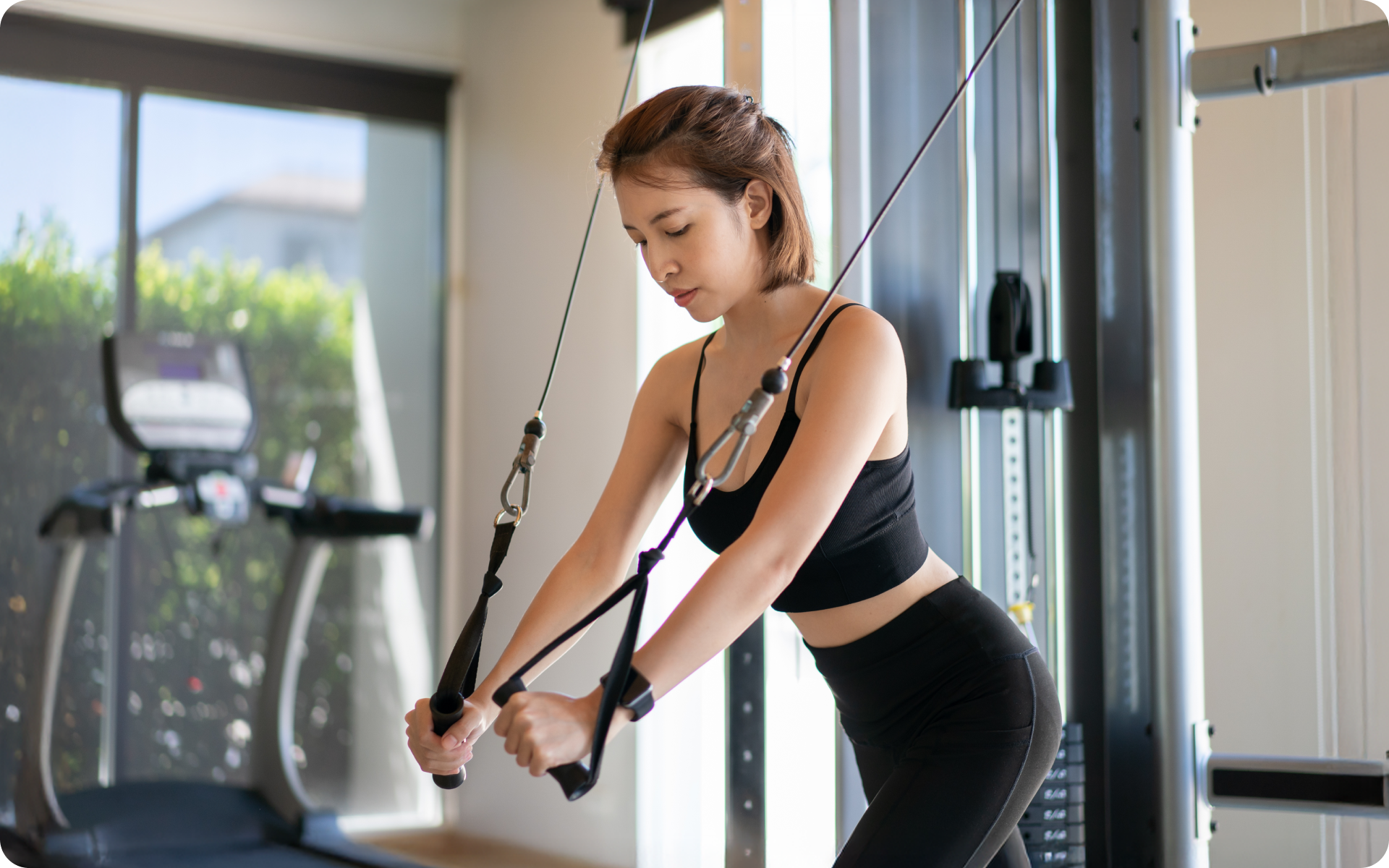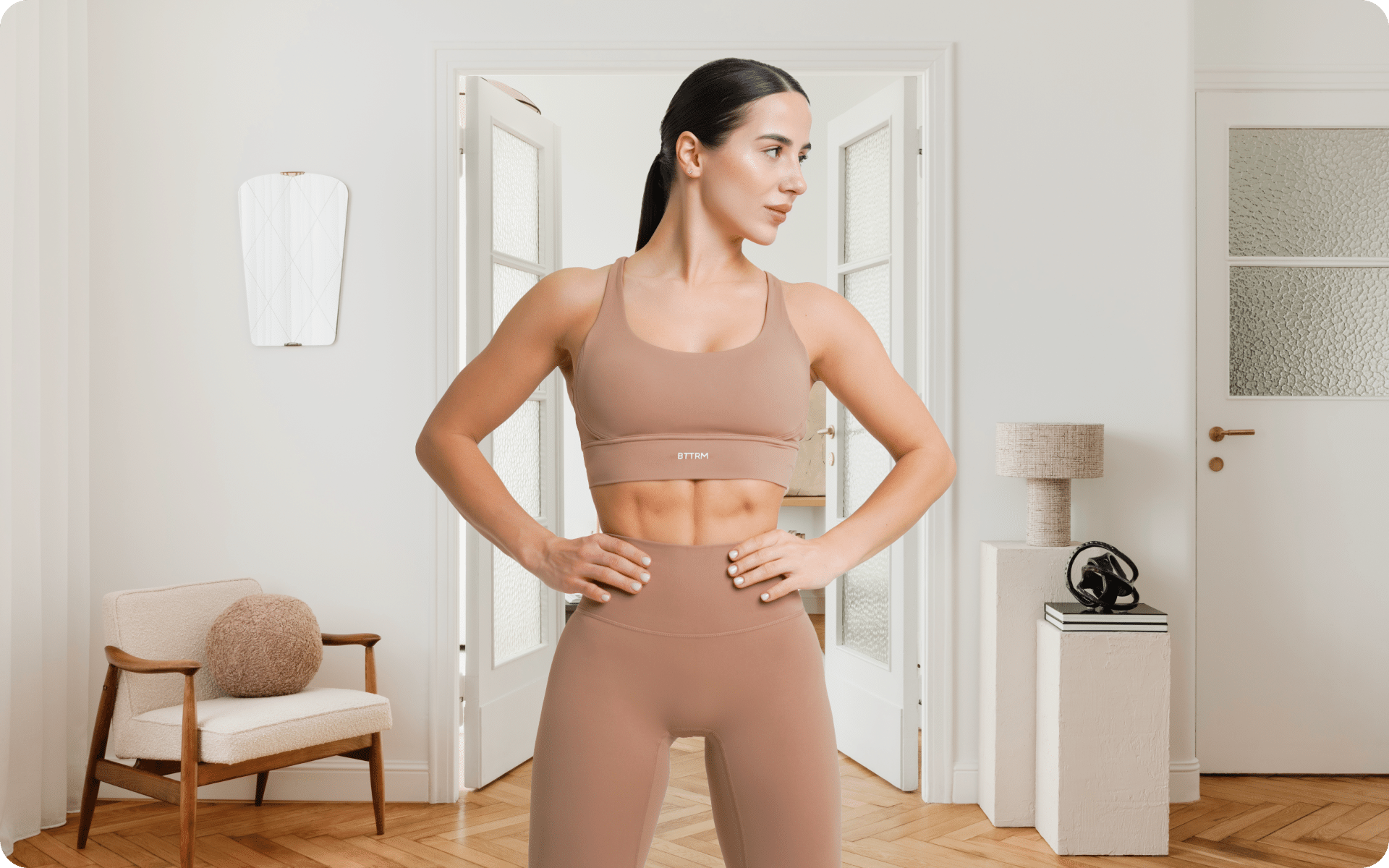A common misconception about exercise is that if it’s not high-intensity, sweat-drenching, and heart-pounding, it’s not effective for weight loss. However, this couldn’t be further from the truth. Especially for individuals with limited mobility, flexibility, or fitness level, low-intensity workouts can be a game-changer.
These workouts are designed to gently increase heart rate, improve circulation, and stimulate fat burning without causing undue stress on joints or exacerbating existing health conditions. Contrary to popular belief, they can contribute significantly to weight loss and overall fitness.
The key lies in understanding how to use them effectively and consistently. In this article, we will explore these gentle yet powerful exercises, their benefits, and how you can incorporate them into your fitness routine to achieve your weight loss goals.
Today we will debunk the myth that only high-intensity training can yield results, and demonstrate how you can make significant strides towards your fitness goals with low-intensity workouts.
What Makes a Workout Low-Intensity?
A workout is considered low-intensity when it doesn’t significantly raise your heart or breathing rates, and you can maintain the activity for extended periods without getting overly fatigued.
Here are some key characteristics that make a workout low-intensity:
- Heart Rate: During a low-intensity workout, your heart rate typically stays below 60% of your maximum heart rate. You can calculate your estimated maximum heart rate by subtracting your age from 220.
- Breathing: Low-intensity workouts allow you to breathe easily and carry on a conversation without gasping for air. If you’re out of breath, the exercise is likely moderate or high intensity.
- Duration: Low-intensity workouts can usually be sustained for longer periods, often 30 minutes or more. This is because they use less energy quickly, allowing you to keep going for longer.
- Exertion Level: On a scale of perceived exertion, where 1 is sitting on the couch and 10 is your absolute maximum effort, low-intensity workouts generally fall around a 3 or 4. You should feel like you’re doing something but not straining or pushing yourself too hard.
- Energy Source: Low-intensity workouts primarily use fat as the main source of energy. This is why they’re often recommended for fat loss despite burning fewer calories per minute than high-intensity workouts.
- Recovery Time: Low-intensity workouts typically require less recovery time. Because they’re less taxing on the body, you’re usually able to do them every day without risking overtraining or injury.
If you’ve mustered up the courage to crush your weight loss goal, let Betterme take the sting out of this demanding process. Our app will help you restructure your habits, remold your life and crank up your fitness results!
What Is an Example of Low-Intensity Training?
One popular example of low-intensity training is walking. Walking is a low-impact exercise that raises your heart rate to about 50-60% of its maximum, which falls into the category of low-intensity. It’s easy on the joints, requires no special equipment, and can be done anywhere.
Whether you’re strolling in a park or doing laps around your living room, walking is a simple and effective form of low-intensity exercise that can contribute to overall fitness and weight loss when done consistently.
Are Low-Intensity Workouts Good for Weight Loss?
Yes, low-intensity workouts can indeed be effective for weight loss (2).
The key lies in understanding the body’s energy systems and how they respond to different intensities of exercise. Our bodies use two primary sources of fuel to power our physical activity: carbohydrates and fats. During high-intensity workouts, your body primarily uses carbohydrates for quick energy because it’s an easily accessible source.
However, during low-intensity workouts, your body tends to utilize more fat as a fuel source. This process is known as fat oxidation (5).
Low-intensity workouts, such as walking, yoga, or light cycling, keep your heart rate at about 50-60% of its maximum. This intensity level is often referred to as the ‘fat-burning zone’ because it optimizes the body’s ability to tap into fat stores for energy utilization, promoting weight loss over time.
In addition, low-intensity workouts are sustainable and less likely to lead to burnout or injury, making them a good choice for those just starting their fitness journey or those with physical limitations.
This type of workout also promotes better recovery, allowing you to exercise more consistently, which is crucial for long-term weight loss.
Remember that diet plays a significant role in weight loss. Even the most effective workout regime needs to be complemented by a balanced, calorie-controlled diet to see the desired results.
Can You Build Muscle With Low Intensity Workouts?
Yes, you can build muscle with low-intensity workouts.
Muscle growth, or hypertrophy, is stimulated by resistance training that causes micro-tears in the muscle fibers. When you rest, your body repairs these micro-tears, building stronger and larger muscles in the process. This is known as the “damage-repair” process.
Low-intensity workouts, often referred to as low-intensity steady-state (LISS) exercises, like walking, cycling at a slow pace, or doing light yoga, primarily engage your slow-twitch muscle fibers. These muscle fibers are more endurance-oriented and don’t grow as large or as quickly as fast-twitch fibers, which are engaged during high-intensity workouts.
However, low-intensity resistance training, such as lifting lighter weights for more repetitions, can also stimulate muscle growth (3). The key lies in training to muscular fatigue.
Even with lighter weights, if you continue your sets to the point where you cannot do another repetition with good form (also known as training to muscular failure), you’re creating enough stress to trigger the damage-repair process and stimulate muscle growth.
Low-intensity workouts have the added benefit of being easier on your joints and tendons than high-intensity workouts, reducing the risk of injury. They can also allow for better recovery, which is an important part of muscle growth.
So, while high-intensity resistance training might lead to quicker muscle gain, low-intensity workouts, when done correctly and consistently, can certainly also contribute to muscle growth over time.
Remember that nutrition plays a significant role in muscle growth, so make sure you’re getting enough protein and overall calories to support your workouts and recovery.
What Else Are Low Intensity Workouts Effective For?
Yes, low-intensity workouts are effective and offer several other benefits:
- Improve Cardiovascular Health: Regular low-intensity exercise can help lower blood pressure, reduce cholesterol levels, and enhance overall cardiovascular health (4).
- Increase Stamina and Endurance: These workouts primarily engage your slow-twitch muscle fibers, which are endurance-oriented. Over time, this can improve your stamina and endurance (4).
- Better Recovery: Low-intensity workouts put less stress on your joints and muscles compared to high-intensity workouts, leading to better recovery and less risk of injury (1).
- Ease into Fitness: For those new to exercise or returning after a long break, low-intensity workouts provide a manageable way to start, helping to build fitness gradually without overwhelming the body (1).
- Mental Health Benefits: Like all forms of exercise, low-intensity workouts can boost mood, reduce stress and anxiety, and improve sleep (1).
Read more: Low Impact Workout: A Comprehensive Guide for Beginners.
7 Low Intensity Workouts for Weight Loss
Below, we’ve listed 7 low-intensity workouts and how to use them for fat loss:
1. Walking
Walking is one of the simplest and most effective low intensity workouts for weight loss. It’s a natural, everyday movement that requires no equipment, making it an ideal choice for beginners or anyone seeking a gentle form of exercise. The beauty of walking lies in its subtlety; it can help you burn more fat without putting excessive strain on your body.
Here’s a simple walking plan for fat loss:
- Start with a 5-minute warm-up at a comfortable pace.
- Gradually increase your speed until you’re walking briskly.
- Maintain this brisk pace for about 20-30 minutes.
- Incorporate intervals, where you walk faster for 1-2 minutes, then slow down for 2-3 minutes.
- Include some uphill walking if possible to increase the intensity.
- Cool down with 5 minutes of slower walking.
- Stretch your legs after each walk.
Aim to walk at least 5 times a week.
2. Yoga
Yoga is a holistic practice that combines physical postures, breathing exercises, and meditation. It can be an effective low-intensity workout to lose weight, especially when practiced regularly.
Yoga helps to enhance flexibility, build strength, and improve balance, all while promoting relaxation and stress relief.
Here’s a beginner-friendly yoga sequence for fat loss:
- Begin with 5 minutes of deep breathing to calm your mind and warm up your body.
- Practice Sun Salutation A for 10 minutes. This sequence includes poses like Mountain Pose, Forward Fold, Plank, and Downward Dog.
- Move on to Sun Salutation B, which adds Warrior I and Chair Pose, for another 10 minutes.
- Spend 10 minutes doing standing poses such as Warrior II, Triangle Pose, and Tree Pose.
- Finish with 5 minutes of seated twists and forward folds, followed by Savasana (Corpse Pose) for relaxation.
- Practice this sequence 3-5 times a week.
3. Pilates
Pilates is a low-intensity workout that focuses on core strength, flexibility, and overall body awareness. It’s an excellent choice for those who want a full-body workout without the high impact of other forms of exercise. Pilates can also help improve posture and muscle tone, contributing to a leaner appearance.
Here’s a simple Pilates workout for fat loss:
- Warm up with some gentle stretching and deep breathing.
- Start with Pilates fundamentals like Pelvic Curl, Chest Lift, and Spine Twist.
- Progress to classic Pilates exercises such as Hundred, Rolling Like a Ball, and Single Leg Stretch.
- Include some standing Pilates exercises like Squats and Lunges.
- Finish with a cool-down stretch.
Aim to do this workout 2-3 times per week.
4. Cycling
Cycling is an enjoyable low-intensity workout for fat loss that can be done indoors on a stationary bike or outdoors on a traditional bicycle. It’s a great cardiovascular workout that also strengthens your lower body muscles.
Cycling at a steady, moderate pace can help you burn calories and lose weight without stressing your joints.
Here’s a basic cycling workout for weight loss:
- Begin with a 5-minute warm-up at a slow pace.
- Cycle at a moderate pace for 20-30 minutes.
- Introduce some intervals: 1-2 minutes of faster cycling followed by 2-3 minutes of slower cycling.
- Include some hill climbs if you’re cycling outdoors.
- Cool down with 5 minutes of slow cycling.
- Stretch your legs after your ride.
Aim to cycle 3-5 times a week.
5. Swimming
Swimming is a full-body low-intensity workout that’s perfect for weight loss. It works all major muscle groups, burns calories, and enhances cardiovascular health. Plus, it’s a non-weight bearing exercise, meaning it’s easy on the joints.
Here’s a beginner-friendly swimming workout for fat loss:
- Start with a gentle warm-up: swim 4 lengths of the pool at a comfortable pace.
- Swim 8 lengths at a moderate pace.
- Rest for 30 seconds.
- Repeat the above step 3-5 times.
- Cool down by swimming 4 lengths at a slow pace.
Plan to swim 2-3 times a week.
6. Tai Chi
Tai Chi is a form of martial art that involves slow, controlled movements and deep breathing. It’s a low-intensity workout that can help reduce stress, improve balance, and aid in weight loss.
Here’s a simple Tai Chi routine for beginners:
- Begin with a warm-up: do some shoulder rolls, neck stretches, and shake out your arms and legs.
- Practice the basic Tai Chi stances: Horse Stance, Bow Stance, and Empty Stance.
- Learn a few simple Tai Chi moves, like “Parting the Wild Horse’s Mane” or “Grasping the Bird’s Tail”.
- Practice these moves in a sequence, flowing smoothly from one move to the next.
- Finish with a cool-down: take some deep breaths and shake out your limbs.
Schedule Tai Chi daily for best results.
7. Low Intensity Weight Training
Low intensity weight training involves lifting lighter weights for more repetitions. This form of exercise can stimulate muscle growth and boost metabolism, helping you burn more calories and lose weight.
Here’s a basic low-intensity weight training routine:
- Warm up with some light cardio, like jogging or jumping jacks.
- Perform exercises that target all major muscle groups. For example, you could do squats for your lower body, push-ups for your upper body, and planks for your core.
- Use light weights and aim for 15-20 repetitions per set.
- Do 2-3 sets of each exercise.
- Rest for 30-60 seconds between sets.
- Cool down with some light stretching.
It’s best to do this workout 2-3 times a week.
When it comes to weight loss, progress is made by inches, not miles, so it’s much harder to track and a lot easier to give up. BetterMe app is your personal trainer, nutritionist and support system all in one. Start using our app to stay on track and hold yourself accountable!
Frequently Asked Questions
Can You Lose Weight With Low Intensity Exercise?
Yes, you can lose weight with low-intensity exercise. These exercises burn calories, albeit at a slower rate than high-intensity exercises.
However, low-intensity workouts are sustainable and can be done for longer periods, which can lead to significant calorie burn over time. When combined with a healthy diet, low-intensity exercises can definitely contribute to weight loss.
Are Push Ups Low Intensity?
The intensity of push-ups can vary depending on your fitness level and the variation of the push-up you’re doing. For someone in good physical condition, standard push-ups might be considered moderate intensity. For beginners or those out of shape, they can be high intensity.
However, modifications like knee push-ups or wall push-ups can make the exercise low intensity.
Are Squats Low Intensity?
The intensity of squats depends on your fitness level and the type of squat you’re doing. Basic bodyweight squats can be low to moderate intensity for most people.
Adding weights or performing variations like jump squats increases the intensity. However, doing squats slowly and with control can keep them in the low-intensity range.
The Bottom Line
Low-intensity exercise is a great way to burn calories and lose weight. It’s easy on the joints, can be done for longer periods of time, and provides numerous health benefits. From walking to
Pilates to low-intensity weight training, there are plenty of low-intensity workouts that are perfect for fat loss.
With this in mind, if you’re looking for a gentler alternative to high-intensity exercise, try out some of the low-intensity workouts mentioned above. They can help you reach your weight loss goals without straining your body.
DISCLAIMER:
This article is intended for general informational purposes only and does not serve to address individual circumstances. It is not a substitute for professional advice or help and should not be relied on for making any kind of decision-making. Any action taken as a direct or indirect result of the information in this article is entirely at your own risk and is your sole responsibility.
BetterMe, its content staff, and its medical advisors accept no responsibility for inaccuracies, errors, misstatements, inconsistencies, or omissions and specifically disclaim any liability, loss or risk, personal, professional or otherwise, which may be incurred as a consequence, directly or indirectly, of the use and/or application of any content.
You should always seek the advice of your physician or other qualified health provider with any questions you may have regarding a medical condition or your specific situation. Never disregard professional medical advice or delay seeking it because of BetterMe content. If you suspect or think you may have a medical emergency, call your doctor.
SOURCES:
- 5 Benefits of Low-Impact Exercise (2022,gradyhealth.org)
- Effects of Different Low-Intensity Exercise Types on Duration, Energy Expenditure and Perceived Exertion in Obese Individuals (2022,nih.gov)
- Low-intensity exercise can increase muscle mass and strength proportionally to enhanced metabolic stress under ischemic conditions (2012,nih.gov)
- Living healthier through low-impact exercise (2018,thenationshealth.org)
- Optimizing fat oxidation through exercise and diet (2004,nih.gov)









